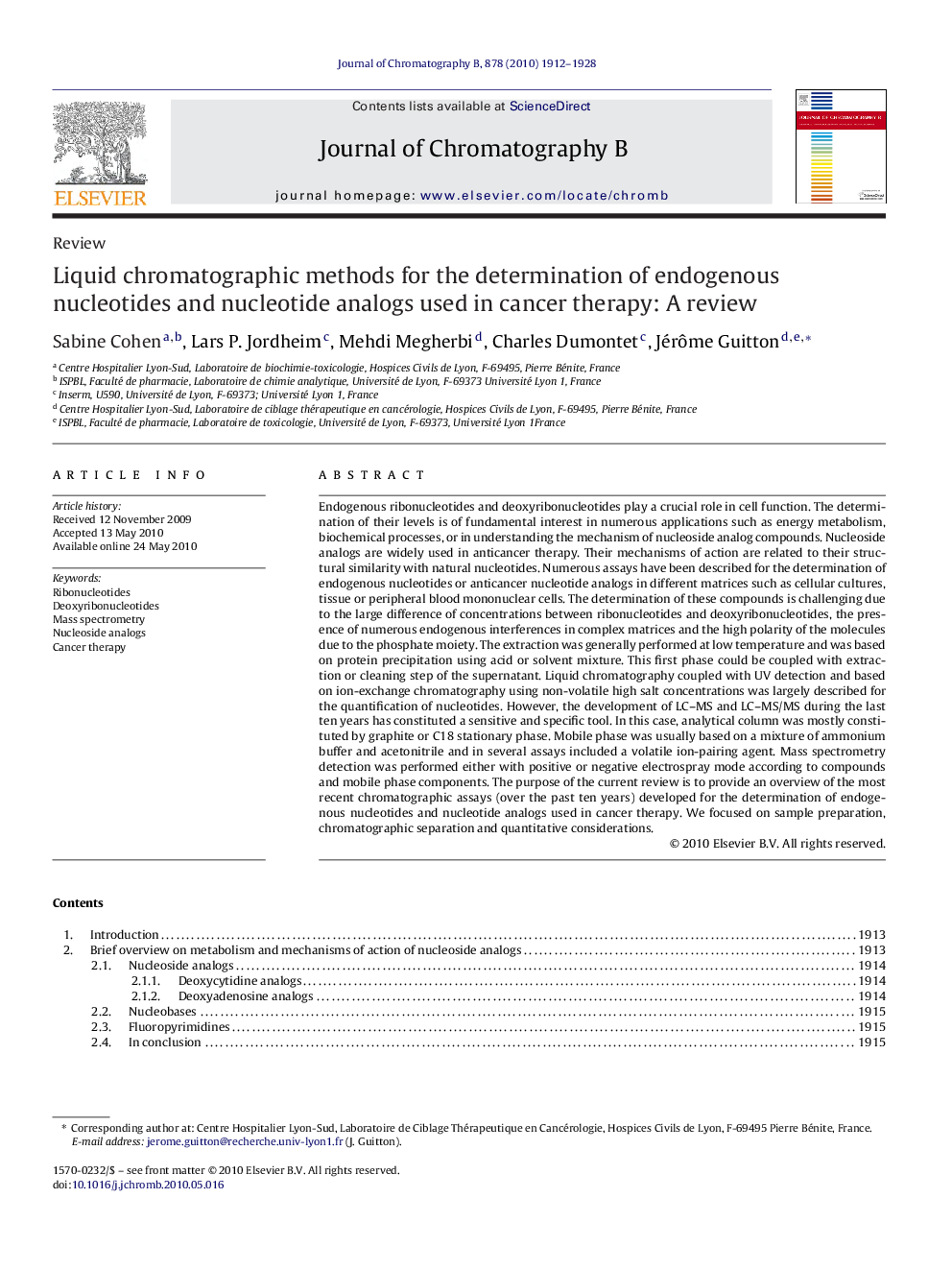| Article ID | Journal | Published Year | Pages | File Type |
|---|---|---|---|---|
| 1213910 | Journal of Chromatography B | 2010 | 17 Pages |
Endogenous ribonucleotides and deoxyribonucleotides play a crucial role in cell function. The determination of their levels is of fundamental interest in numerous applications such as energy metabolism, biochemical processes, or in understanding the mechanism of nucleoside analog compounds. Nucleoside analogs are widely used in anticancer therapy. Their mechanisms of action are related to their structural similarity with natural nucleotides. Numerous assays have been described for the determination of endogenous nucleotides or anticancer nucleotide analogs in different matrices such as cellular cultures, tissue or peripheral blood mononuclear cells. The determination of these compounds is challenging due to the large difference of concentrations between ribonucleotides and deoxyribonucleotides, the presence of numerous endogenous interferences in complex matrices and the high polarity of the molecules due to the phosphate moiety. The extraction was generally performed at low temperature and was based on protein precipitation using acid or solvent mixture. This first phase could be coupled with extraction or cleaning step of the supernatant. Liquid chromatography coupled with UV detection and based on ion-exchange chromatography using non-volatile high salt concentrations was largely described for the quantification of nucleotides. However, the development of LC–MS and LC–MS/MS during the last ten years has constituted a sensitive and specific tool. In this case, analytical column was mostly constituted by graphite or C18 stationary phase. Mobile phase was usually based on a mixture of ammonium buffer and acetonitrile and in several assays included a volatile ion-pairing agent. Mass spectrometry detection was performed either with positive or negative electrospray mode according to compounds and mobile phase components. The purpose of the current review is to provide an overview of the most recent chromatographic assays (over the past ten years) developed for the determination of endogenous nucleotides and nucleotide analogs used in cancer therapy. We focused on sample preparation, chromatographic separation and quantitative considerations.
